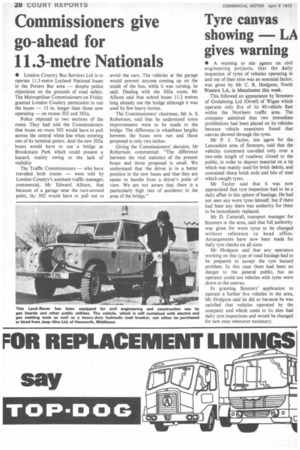Tyre canvas showing — LA gives warning
Page 30

If you've noticed an error in this article please click here to report it so we can fix it.
• A warning to site agents on civil engineering projects, that the daily inspection of tyres of vehicles operating in and out of their sites was an essential factor, was given by Mr C. R. Hodgson, North Western LA, in Manchester this week.
This followed an appearance by Streeters of Godalming Ltd (Orrell) of Wigan which operates only five of its 40-vehicle fleet within the Northern traffic area. The company admitted that two immediate prohibitions had been placed on its vehicles because vehicle examiners found that canvas showed through the tyres.
Mr P. J. Taylor, site agent for the Lancashire area of Streeters, said that the vehicles concerned travelled only over a two-mile length of roadway closed to the public, in order to deposit material on a tip which was mainly used for brick debris, and contained sharp brick ends and bits of steel which caught tyres.
Mr Taylor said that it was now appreciated that tyre inspection had to be a daily affair in this sphere of haulage. He had not seen any worn tyres himself', but if there had been any there was authority for them to be immediately replaced.
Mr D. Catterall, transport manager for Streeters in the area, said that full authority was given for worn tyres to be changed without reference to head office. Arrangements have now been made for daily tyre checks on all sizes.
Mr Hodgson said that any operators working on this type of road haulage had to be prepared to accept the tyre hazard problem. In this case there had been no danger to the general public, but no operator could use vehicles with tyres worn down to the canvas.
In granting Streeters' application to operate a further five vehicles in the area, Mr Hodgson said he did so because he was satisfied that vehicles operated by the company and which carte to its sites had daily tyre inspections and would be changed for new ones whenever necessary.












































































































